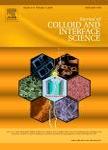版权所有:内蒙古大学图书馆 技术提供:维普资讯• 智图
内蒙古自治区呼和浩特市赛罕区大学西街235号 邮编: 010021

作者机构:Department of Chemical Engineering National Taiwan University of Science and Technology Taipei10607 Taiwan National Synchrotron Radiation Research Center Hsinchu30076 Taiwan Graduate Institute of Applied Science and Technology National Taiwan University of Science and Technology Taipei10607 Taiwan
出 版 物:《Journal of Colloid and Interface Science》 (J. Colloid Interface Sci.)
年 卷 期:2024年第654卷第PartA期
页 面:677-687页
核心收录:
学科分类:0808[工学-电气工程] 081704[工学-应用化学] 0809[工学-电子科学与技术(可授工学、理学学位)] 07[理学] 0817[工学-化学工程与技术] 0806[工学-冶金工程] 070304[理学-物理化学(含∶化学物理)] 08[工学] 070203[理学-原子与分子物理] 0703[理学-化学] 0702[理学-物理学]
基 金:This work was financially supported by the National Science and Technology Council (NSTC) in Taiwan (MOST 111-2221-E-011-011 NSTC 112-2218-E-01-011 and NSTC 112-2221-E-011-016-MY3) the Ministry of Education of Taiwan ("Sustainable Electrochemical Energy Development (SEED) Center" project) and the National Taiwan University of Science and Technology & Institut Teknologi Sepuluh Nopember Joint Research Program (ITS-NTUST-112-05). Research facilities of hard-XAS and soft-XAS were provided by the beamline of BL17C1 and BL20A1 respectively National Synchrotron Radiation Research Center (NSRRC) in Taiwan. We also thank Ms. C.-Y. Chien of NSTC (located at National Taiwan University) for assistance with the TEM experiments.This work was financially supported by the National Science and Technology Council (NSTC) in Taiwan (MOST 111-2221-E-011-011 NSTC 112-2218-E-01-011 and NSTC 112-2221-E-011-016-MY3) the Ministry of Education of Taiwan ("Sustainable Electrochemical Energy Development (SEED) Center" project) and the National Taiwan University of Science and Technology & Institut Teknologi Sepuluh Nopember Joint Research Program (ITS-NTUST-112-05). Research facilities of hard-XAS and soft-XAS were provided by the beamline of BL17C1 and BL20A1 respectively National Synchrotron Radiation Research Center (NSRRC) in Taiwan. We also thank Ms. C.-Y. Chien of NSTC (located at National Taiwan University) for assistance with the TEM experiments
主 题:Electrocatalysts
摘 要:As a crucial stage of electrochemical water splitting, hydrogen evolution reaction (HER) favour catalyst to attain rapid kinetics for its broader application, alternating Pt in the acidic environment. Transition metal phosphides (TMPs) are one kind of earth-abundant, nonprecious-based catalyst which has been classified as a viable alternative and active for HER. While the performance remains inferior to Pt which primarily targets durability under high current density, pinpointing the reconfiguration strategy would be critical to their catalytic competency. Herein, we reported engineered N-doped graphene quantum dots (NGQD) on the surface of bimetallic CoFe phosphide (CoFeP) derived from cobalt iron Prussian blue analogue (CoFePBA) as an efficient HER. By introducing the NGQD, the surface architect and electronic state of the transition metal are altered through an adjusted electronic configuration and thus, improving the electrocatalytic activity for HER. The X-ray absorption spectroscopy (XAS) highlighting the role of NGQD, which successfully induced the electron density of Co atoms, further expedites its conductivity and electroactivity. The optimized NGQD/CoFeP substantially surpasses an overpotential of 70 mV (vs. RHE) at the current density of 10 mA cm−2 in 0.5 M H2SO4. Furthermore, the NGQD/CoFeP maintains its exceptional stability under an extremely high current density of 600 mA cm−2 after 12 h of continuous operation. Our findings show that NGQD/CoFeP might demonstrate as a viable alternative to the conventional Pt electrocatalyst in commercial water splitting for hydrogen generation. © 2023 Elsevier Inc.